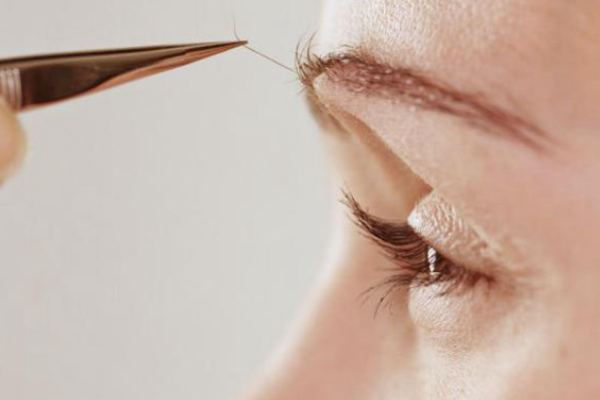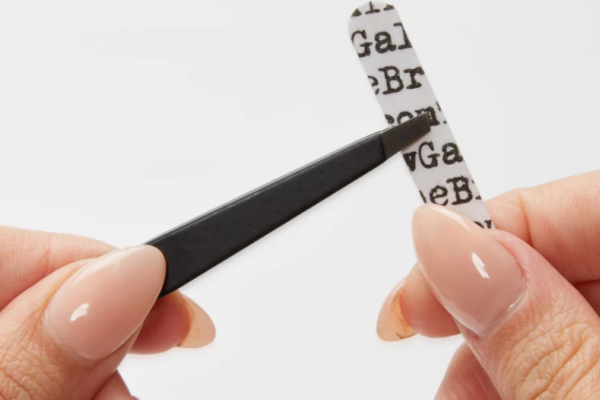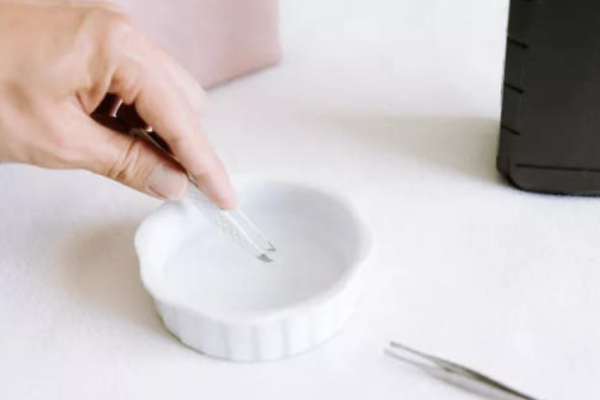Are you tired of struggling with dull tweezers that just don't cut it anymore? Whether you're a beauty enthusiast aiming for the perfect eyebrow or a meticulous crafter seeking precision, we've got your solution for sharpening tweezers. In this comprehensive guide, Nghia Nippers delve into the secrets to reviving your trusty tools and elevating their performance. Say goodbye to frustration and hello to a new level of accuracy.

1. Importance of sharp tweezers
Tweezers, often underestimated tools, carry a significance that goes beyond their size and simplicity. The sharpness of tweezers plays a crucial role in their effectiveness across various tasks and applications. From grooming to delicate craftsmanship, the importance of sharp tweezers is undeniable.
- Precision Perfected
At the core of tweezers' purpose lies precision. Whether sculpting eyebrows, plucking splinters, or assembling components, precision is paramount. Sharp tweezers provide a superior grip on even the tiniest objects, ensuring exact and controlled movements. This level of control is vital for tasks where a fraction of a millimeter can make a significant difference, and it's especially important to learn how to fix tweezers that don't grip.
- Amplified Efficiency
Swift and Seamless Efficiency is a prized quality in any endeavor, and sharp tweezers play a pivotal role. They require less effort to grasp and manipulate objects, accelerating work and reducing strain on hands. Whether you're a busy beautician or an artisan crafting intricate designs, the efficiency gained from sharp tweezers translates into heightened productivity.
- Versatility Amplified
Beauty to Precision Engineering Sharp tweezers' versatility is striking. They span fields from personal grooming to medical procedures and electronics assembly. For beauty enthusiasts, they're crucial for precise eyebrow shaping and flawless makeup application. In medical settings, they aid delicate procedures with minimal tissue disruption. In electronics, they enable handling minuscule components with absolute accuracy. Sharp tweezers adapt seamlessly, showcasing their indispensability.

- Elevated Professionalism
Making impressions count your tool's quality reflects dedication and commitment. Sharp tweezers highlight attention to detail and understanding of tools. In industries like beauty, jewelry, or electronics, the difference between sharp and dull tweezers defines work quality.
- Optimal Results Achieved
Aesthetically, they enable precise shaping and grooming for a polished appearance. Functionally, they ensure accurate and efficient tasks, minimizing errors. Whether plucking brows, picking gemstones, or positioning components, results with sharp tweezers are consistently superior.
2. Tools and materials for tweezer sharpening
Embarking on the journey to enhance your tweezers' performance requires the right tools and materials. To bring back the sharpness and precision of your tweezers, gather the following essentials:
- Nail file or sandpaper: This primary tool is your key to removing the bluntness from your tweezers' tips and restoring their sharp edge.
- Angled tweezer tip sharpeners: If your tweezers have angled tips, these specialized sharpeners will aid in refining the angle and edge, ensuring precision in your tasks.
- Pliers: For more advanced techniques involving bending the tweezer tips, pliers are indispensable. They help you achieve the desired level of sharpness effectively.
- Clean cloth or tissue: Having a clean cloth or tissue on hand is essential for wiping down your tweezers during the sharpening process, ensuring that they are free from debris.
- Magnifying glass or good lighting: To ensure your sharpening efforts are accurate and effective, good lighting or a magnifying glass can help you closely examine the tips of your tweezers.
- Protective gloves: As you work with tweezers and potentially sharp tools, protective gloves can prevent accidental nicks or cuts, ensuring your safety throughout the process.
- Cleaning solution or alcohol: After sharpening, cleaning your tweezers with a suitable solution or alcohol helps remove any particles or residues, leaving them ready for use.
Gathering these tools and materials sets the stage for successful tweezer sharpening, allowing you to optimize their performance for various tasks.

3. Preparing the tweezers
Before you embark on the process of sharpening your tweezers, it's vital to ensure they are properly prepared. This step lays the foundation for a successful sharpening process and optimal results:
- Thorough Cleaning: Begin by thoroughly cleaning your tweezers. Remove any dust, debris, or residue that might have accumulated on the tips or along the edges. A clean surface ensures that you're working on the actual metal, allowing for effective sharpening.
- Inspection: Take a moment to inspect your tweezers closely. Look for any signs of damage, such as nicks, bends, or misalignments. Addressing these issues before sharpening will contribute to a smoother and more precise process.
- Remove Moisture: Ensure that your tweezers are completely dry before you start sharpening. Any moisture or dampness can affect the sharpening process and potentially lead to corrosion. Use a clean, dry cloth to wipe them down if necessary.
>>> Read now: How to use a tweezer
By adhering to these preparatory steps, you're setting the stage for a successful tweezers sharpening experience. Clean, well-inspected tweezers ensure that the sharpening techniques you employ will yield the best possible results, enhancing the overall performance of your valuable tools.

4. Tweezer sharpening techniques
Tweezers are versatile tools that thrive on sharpness. The art of sharpening tweezers involves a range of techniques that cater to various types of tweezers and tasks. Below are three effective methods that will breathe new life into your tweezers:
4.1 Method 1: Using a nail file or sandpaper
This method is straightforward and effective for general. Follow these steps:
- Select the Right Grit: Choose a nail file or sandpaper with a fine to medium grit. This ensures controlled abrasion without causing damage.
- Hold Firmly: Hold your tweezers securely, keeping them at a comfortable angle.
- File with Precision: Gently stroke the nail file or sandpaper along the tips of the tweezers, maintaining a consistent angle. Use even pressure to remove the bluntness.
- Test the Sharpness: After filing, test the sharpness by gripping a thin piece of paper or a strand of hair. If the tweezers grip firmly, you're on the right track.
4.2 Method 2: Sharpening angled tweezer tips
If your tweezers have angled tips, this method ensures their unique edge is maintained:
- Secure Position: Hold the tweezers at a comfortable angle that matches the existing angle of the tips.
- Use Angled Sharpeners: Employ specialized angled tweezer tip sharpeners, designed to preserve the precise edge. Follow the manufacturer's instructions for optimal results.
- Gentle Application: Apply gentle pressure and controlled movements to the sharpeners, refining the angle and edge.
4.3 Method 3: Bending your tweezers into shape
For those with a steady hand and an adventurous approach, this technique allows you to mold your tweezers' tips:
- Caution and Control: Only attempt this method if you're confident in your control. Use pliers to bend the tips gradually.
- Micro-Adjustments: Make small adjustments to the angle and shape of the tips. This method requires patience and precision.
- Test Thoroughly: Regularly test the sharpness and grip as you adjust. Stop if you achieve the desired sharpness.

5. Testing the sharpness
Once you've completed the sharpening process, it's essential to assess the sharpness of your tweezers before putting them to use. A simple test will help ensure they are ready to perform with accuracy
Grip Test: Gently grasp a thin piece of paper or a strand of hair between the tweezer tips. Apply a slight amount of pressure as you close the tips together. If the tweezers grip the material firmly without it slipping away, your sharpening efforts have been successful.
Read more: Exploring the Different Types of Tweezers: A Comprehensive GuideRemember, the purpose of testing sharpness is to ensure that your tweezers can effectively grip and manipulate small objects with precision. If the grip isn't secure, it's an indication that further sharpening may be required.
6.Best practices for maintaining sharp tweezers
Maintaining the sharpness of your tweezers is an ongoing process that ensures their optimal performance over time. But what happens when they start to lose their grip? Why do tweezers stop working and what can be done to remedy the situation? Understanding these factors is crucial for extending the life of your tweezers. Furthermore, discovering how to make tweezers work again is a skill that can save you from the frustration of dull tools and help you continue your precision tasks effortlessly.

6.1 Cleaning and sanitizing
Regularly clean and sanitize your tweezers to prevent the accumulation of debris, oils, or bacteria that could hinder their functionality.
6.2 Proper storage
Invest in a protective case or pouch to shield your tweezers from external elements that could dull their edges. Proper storage prolongs their sharpness and longevity.
6.3 Regular maintenance
Incorporate tweezers sharpening into your routine. Schedule periodic checks and touch-ups to sustain optimal sharpness, ensuring your tweezers are always ready for precise tasks.
In the realm of precision and finesse, having sharp tweezers is a game-changer. Whether you're a beauty enthusiast, a DIY aficionado, or a professional requiring utmost accuracy, mastering the art of how to sharpen tweezers empowers you to achieve flawless results. Armed with the insights and techniques from Nghia Nippers in this guide, you're ready to embark on your journey toward optimal precision and efficiency.













